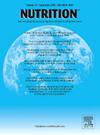Healthy lifestyle and sustainable behaviors: a proposal for the food pyramid in the Brazilian context
IF 3.2
3区 医学
Q2 NUTRITION & DIETETICS
引用次数: 0
Abstract
Objectives
Food graphics are visual representations that help many stakeholders follow nutrition recommendations, improve their lifestyle, and follow sustainable behaviors. There is a paucity of recent evidence on the use of food graphics, and this review provides the foundation for adapting a food graphic for the Brazilian context.
Methods
A narrative review of the literature on food graphics, healthy eating, and sustainability was performed. The official Food Agriculture Organization/United Nations website was used to identify food guides the respective graphics/icons, key messages, and food groups.
Results
Many countries use food graphics to educate people on healthy eating, lifestyle, and sustainable behaviors. In the food guides we analyzed, the most representative food graphics included circular and hierarchical types. Hierarchical types were represented by a variety of names, with pyramids or triangles the most common forms. Core recommendations on healthy food choices were based on the WHO and EAT-Lancet. Seven food groups were identified according to the country's socio-cultural and economic context. Additionally, water and other sugar-free beverages, unconventional food plants, and physical activity were included in the graphic. The majority of countries’ food graphics named each food group according to the main food. For all countries improvements in lifestyle behaviors was the key message, while one quarter of countries included sustainability messages.
Conclusions
Food graphics, such as pyramids, represent an important tool to assist all stakeholders to follow dietary recommendations. These graphics provide the information needed to recognize and put into practice individual and social behaviors that promote the improved individual and community health of future generations.

健康的生活方式和可持续的行为:巴西背景下的食物金字塔建议
目的食品图形是一种可视化的表现形式,可以帮助许多利益相关者遵循营养建议、改善生活方式并采取可持续的行为。有关食品图形使用的最新证据很少,本综述为根据巴西国情改编食品图形奠定了基础。方法对有关食品图形、健康饮食和可持续性的文献进行了叙述性综述。结果许多国家使用食物图解来教育人们健康饮食、生活方式和可持续行为。在我们分析的食品指南中,最具代表性的食品图形包括圆形和分层类型。分层类型有多种名称,最常见的是金字塔或三角形。关于健康食品选择的核心建议以世界卫生组织和 EAT-Lancet 为基础。根据国家的社会文化和经济背景,确定了七类食物。此外,图表中还包括水和其他无糖饮料、非传统食品工厂和体育锻炼。大多数国家的食物图表都根据主要食物来命名每个食物类别。对于所有国家来说,改善生活方式行为是关键信息,而四分之一的国家则包含了可持续发展的信息。这些图形提供了所需的信息,使人们认识到个人和社会行为可促进改善个人和社区后代的健康,并将其付诸实践。
本文章由计算机程序翻译,如有差异,请以英文原文为准。
求助全文
约1分钟内获得全文
求助全文
来源期刊

Nutrition
医学-营养学
CiteScore
7.80
自引率
2.30%
发文量
300
审稿时长
60 days
期刊介绍:
Nutrition has an open access mirror journal Nutrition: X, sharing the same aims and scope, editorial team, submission system and rigorous peer review.
Founded by Michael M. Meguid in the early 1980''s, Nutrition presents advances in nutrition research and science, informs its readers on new and advancing technologies and data in clinical nutrition practice, encourages the application of outcomes research and meta-analyses to problems in patient-related nutrition; and seeks to help clarify and set the research, policy and practice agenda for nutrition science to enhance human well-being in the years ahead.
 求助内容:
求助内容: 应助结果提醒方式:
应助结果提醒方式:


